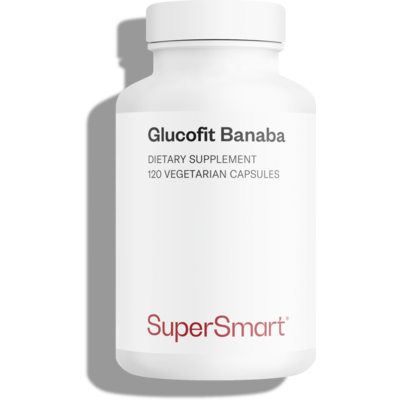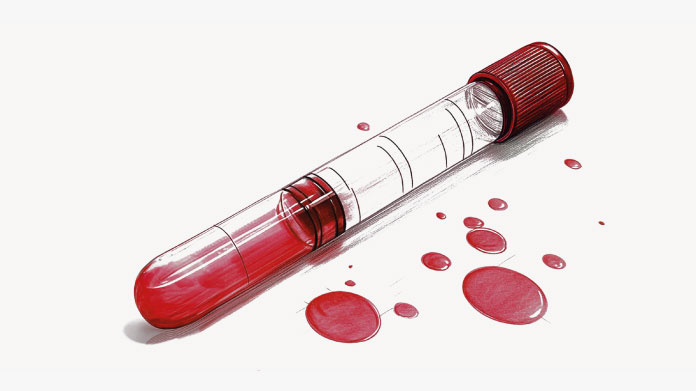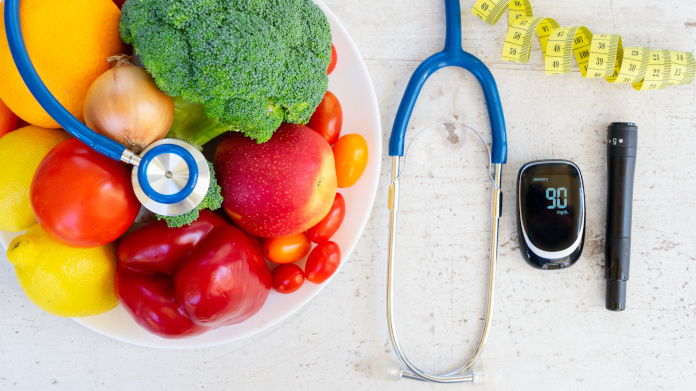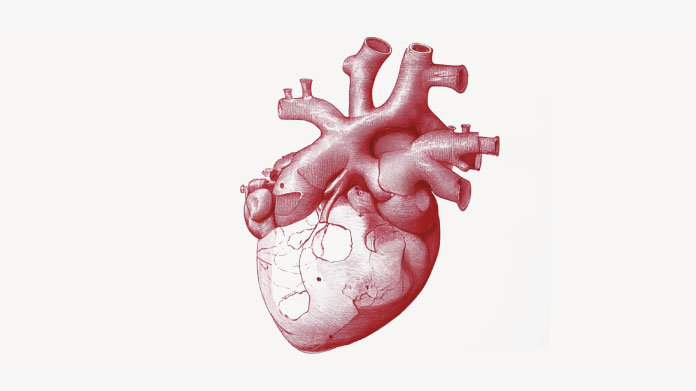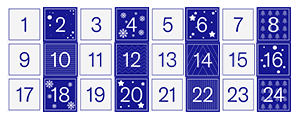Glycemic load: summary table
Keen to follow a low-glycemic load diet? This table lists both the glycemic index and glycemic load of common foods in alphabetical order
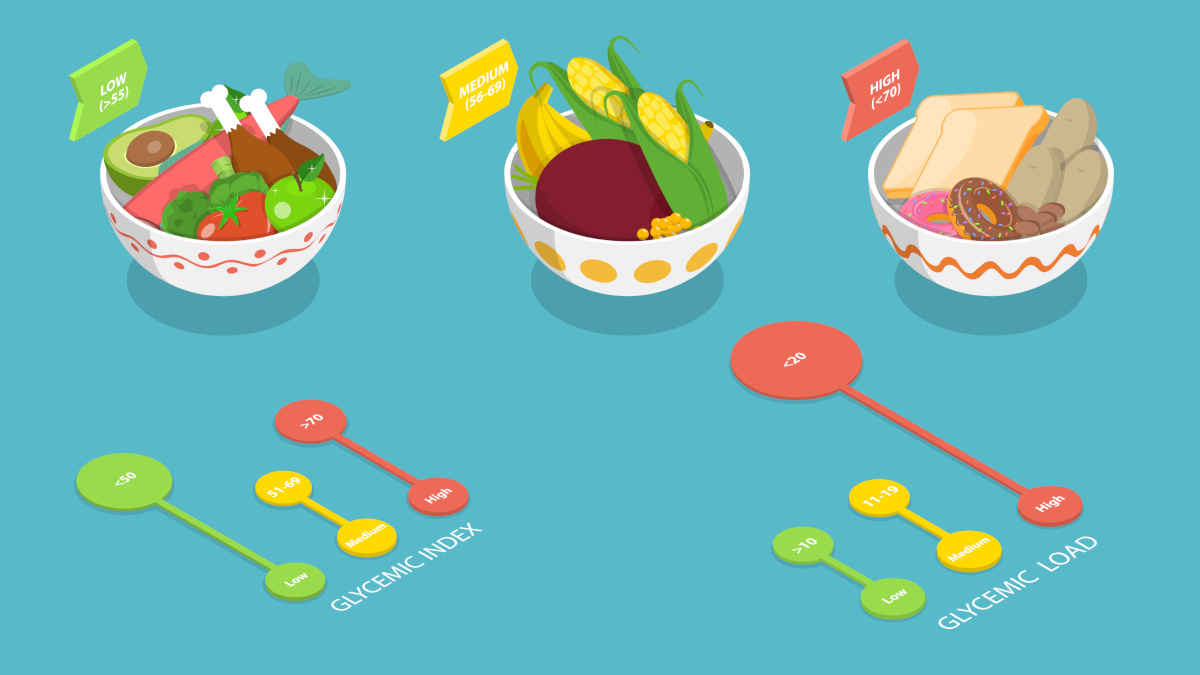
Glycemic index and glycemic load
The glycemic index (GI) is a measure developed by doctors in the 1980s to evaluate the effect of foods on blood sugar levels, as part of efforts to combat diabetes. Basically, the more a food makes blood sugar levels rise, the higher its glycemic index (1).
This device allowed doctors to understand that not all carbohydrates are necessarily bad for diabetics: some carbohydrates (such as glucose and sucrose) are worse than others (such as fructose and starch).
With this knowledge, they were able to categorize foods according to their GI:
- below 55, a food is classed as low GI ;
- between 55 and 69, it is moderate GI;
- above 70, it is high GI.
However, there are two factors not taken into account by the glycemic index:
- the amount of carbohydrates a food contains;
- the the serving size normally consumed of that food.
Because of this, we now have the glycemic load: a new measure which allows a more precise evaluation of a food’s impact on blood sugar(2).
Glycemic load formula
To determine a food’s glycemic load, you multiply its glycemic index by the number of carbohydrates in an average serving of the food, then divide that by 100.
Let’s take the example of cornflakes:
- they have a GI of 80 ;
- a normal 30g serving contains around 25g of carbohydrates, so their glycemic load will be (25 x 80)/100 = 20.
What’s an appropriate daily glycemic load?
It is generally accepted that the daily glycemic load should be somewhere between 80 and 120. Anything above that is considered too high.
To arrive at this figure, you simply add together the glycemic load of all the different foods consumed during the day (using the amount actually consumed rather than that ‘normally’ consumed).
Glycemic index and glycemic load table
To help you, we’ve put together this table of the glycemic load and index of 50 common foods. As you’ll see, it’s the freshest, least refined and least processed foods which have the lowest glycemic load (3).
|
Food |
Carbohydrates per serving |
Glycemic index |
Glycemic load |
|
1. Apricots |
11 |
34 |
3.8 |
|
2. Apricots (dried) |
60 |
30 |
18 |
|
3. Bananas |
21 |
48 |
10 |
|
4. Wheat (cooked) |
90 |
35 |
32 |
|
5. Bulghur wheat |
76 |
55 |
42 |
|
6. Carrots (raw) |
20 |
23 |
2 |
|
7. Carrots (cooked) |
20 |
92 |
9 |
|
8. Cherries |
16 |
25 |
4 |
|
9. Chocolate (dark) |
30 |
23 |
7 |
|
10. Dates |
15 |
29 |
4 |
|
11. Dates (dried) |
35 |
40 |
14 |
|
12. Wholemeal flour T150 (wholemeal loaf) |
15 |
51 |
8 |
|
13. Wholemeal flour T55 (baguette) |
18 |
83 |
12 |
|
14. Wholemeal flour T65 (farmhouse loaf) |
15 |
85 |
13 |
|
15. Strawberries |
7.7 |
25 |
1.9 |
|
16. Gnocchi |
20 |
70 |
14 |
|
17. White beans (cooked) |
64 |
35 |
22.5 |
|
18. Kidney beans (cooked) |
53 |
35 |
18.5 |
|
19. French beans |
21.5 |
80 |
17.2 |
|
20. Kiwi fruit |
15 |
50 |
7.5 |
|
21. Lentils (cooked) |
50 |
25 |
12.5 |
|
22. Lychees |
15 |
50 |
7.6 |
|
23. Mangos |
15 |
56 |
8.5 |
|
24. Honey |
5 |
53 |
3 |
|
25. Muesli (plain) |
47 |
50 |
23.5 |
|
26. Nectarines |
12 |
35 |
4 |
|
27. Nuts |
7 |
15 |
1 |
|
28. Oranges |
12 |
35 |
4 |
|
29. Orange juice |
15 |
45 |
8 |
|
30. Grapefruit |
11 |
22 |
2.5 |
|
31. Watermelon |
7.5 |
75 |
5.5 |
|
32. Sweet potato (cooked) |
28 |
65 |
18.2 |
|
33. White pasta (cooked) |
40 |
60 |
25 |
|
34. Wholemeal pasta (cooked) |
40 |
50 |
20 |
|
35. Peaches |
11 |
35 |
4 |
|
36. Peas (cooked) |
15 |
9 |
1 |
|
37. Pears |
15.5 |
30 |
4.5 |
|
38. Split peas (cooked) |
22 |
22 |
5 |
|
39. Apples |
14 |
36 |
5 |
|
40. Apple juice |
11 |
41 |
4.5 |
|
41. Potato (cooked) |
21 |
95 |
20 |
|
42. Squash (cooked) |
7 |
65 |
4.5 |
|
43. Plums |
11 |
35 |
9 |
|
44. Quinoa (cooked) |
21 |
35 |
7.5 |
|
45. White grapes |
17 |
56 |
9.6 |
|
46. White rice |
80 |
70 |
56 |
|
47. Wholegrain rice |
80 |
50 |
28 |
|
48. Buckwheat |
44 |
50 |
22 |
|
49. Semolina |
70 |
60 |
42 |
|
50. Tomato juice |
4.2 |
35 |
1.5 |
Controlling your blood sugar
If you want to control your weight or indeed lose weight, it’s essential to monitor your blood sugar levels: the metabolism of glucose is a factor in weight gain, and especially fat mass gain.
This is because foods with a high glycemic load produce a spike in insulin, and insulin allows glucose to enter cells. Any excess glucose generated is then metabolized into fat cells called adipocytes.
The good news is there are several plants and natural remedies that can help to normalize the metabolism of sugars and thus regulate glycemia. The main ones are:
- banaba, a tropical shrub containing corosolic acid, a pentacyclic triterpene which transports glucose across the cell membrane (4-5) ;
- barberry, a semi-tropical shrub containing berberine, an alkaloid which promotes glucose metabolism and helps maintain normal glycemia (6);
- Gymnema sylvestris, an Ayurvedic plant containing gymnemic acid, which is believed to delay the absorption of glucose into the blood, thus helping to normalize sugar metabolism (7-8).
SuperSmart ADVICE
References
- WOLEVER, T. M. The glycemic index. World review of nutrition and dietetics, 1990, vol. 62, p. 120-185.
- VENN, B. J. et GREEN, T. J. Glycemic index and glycemic load: measurement issues and their effect on diet–disease relationships. European journal of clinical nutrition, 2007, vol. 61, no 1, p. S122-S131.
- FOSTER-POWELL, Kaye, HOLT, Susanna HA, et BRAND-MILLER, Janette C. International table of glycemic index and glycemic load values: 2002. The American journal of clinical nutrition, 2002, vol. 76, no 1, p. 5-56.
- STOHS, Sidney J., MILLER, Howard, et KAATS, Gilbert R. A review of the efficacy and safety of banaba (Lagerstroemia speciosa L.) and corosolic acid. Phytotherapy Research, 2012, vol. 26, no 3, p. 317-324.
- STOHS, Sidney J., MILLER, Howard, et KAATS, Gilbert R. A review of the efficacy and safety of banaba (Lagerstroemia speciosa L.) and corosolic acid. Phytotherapy Research, 2012, vol. 26, no 3, p. 317-324.
- LI, Cheng, HE, Jin-Zhi, ZHOU, Xue-Dong, et al.Berberine regulates type 2 diabetes mellitus related with insulin resistance. Zhongguo Zhong yao za zhi= Zhongguo zhongyao zazhi= China journal of Chinese materia medica, 2017, vol. 42, no 12, p. 2254-2260.
- SHANMUGASUNDARAM, E. R. B., RAJESWARI, G., BASKARAN, K., et al.Use of Gymnema sylvestre leaf extract in the control of blood glucose in insulin-dependent diabetes mellitus. Journal of ethnopharmacology, 1990, vol. 30, no 3, p. 281-294.
- SANEJA, Ankit, SHARMA, Chetan, ANEJA, K. R., et al.Gymnema sylvestre (Gurmar): A review. Der Pharmacia Lettre, 2010, vol. 2, no 1, p. 275-284.
24 Hours
Ordering was easy and the product was…
Ordering was easy and the product was delivered with no problems. Appreciated that I was notified when it would arrive. Thanks!
MascarC
6 Days
Great customer service - responsive …
I ordered from them and my item was unavailable for sometime. I was super happy when they reactivated my order and shipped my item which arrived very quickly. Great customer service.
Ruth Rueter
7 Days
Super fast shipping
Super fast shipping
Donald Borling
10 Days
Reputable companysearch and the number of…
The research and the number of selection of products.
NAKHJAVAN Shervin
23 Days
The Anti Aromatase is a great product
The Anti Aromatase is a great product. You just need to have constant inventory. Recently this product has been out of stock.
GEORGE Verne
25 Days
Great help on chat
Great help on chat. Knowledgeable and friendly.
Jason Argos
28 Days
Customer service was fast and friendly.
Customer service helped to stop the transaction process of the subscription. I appreciated that.
Greenie
29 Days
I order here due to the high quality of…
I order here due to the high quality of the products and the quick delivery of items - thank you
Barbara J
30 Days
SuperSmart's Eye Pressure supplements: highly recommended!
I purchase SuperSmart's Eye Pressure supplements regularly for over 5 years, and gotta say they are truly a wonderful product for my Glaucoma. Highly recommended if you have eye pain from your Glaucoma.
D. Martinez
34 Days
Quick service
Quick service
MONELL
35 Days
Speedy service.
Speedy service.
ROSENTHAL Marvin
39 Days
Clear website- Efficient
Clear website. Excellent search engine and fast delivery!
Mohamad Hussein
41 Days
They have great products.
They have great products.
Vickie
41 Days
Great Shipping Time!
You Have A Great Shipping Time! Praise The Lord!
DMHoge
43 Days
Doctor Recommended!
Good pricing, very good availability, doctor recommended (couldn't find what I needed anywhere else), and it took only a week to arrive (which I can't complain about).
Al


